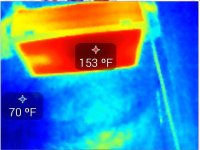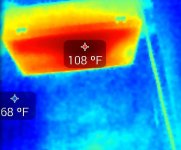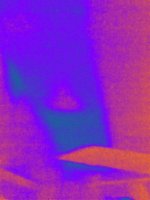The Meadows
Member
I live in the usually very hot and dry desert. I battle heat distribution problems constantly. I have 12 thermometers set up in and around my house feeding into an arduino to help me fight the heat. I have a laser temperature pointer that helps too. But I can't really tell how well its working.
Who hasn't seen a thermal camera output? Predator vision!
FLIR sells a standalone unit with a 640 x 480 pixel sensor for 32 grand. FLIR's least expensive standalone unit costs a grand and has a whopping 80 x 60 pixel sensor. Earlier this year, FLIR introduced the FLIR One for the Apple 5 cellphones. It has the same 80 x 60 sensor and only costs $350.
A few days ago I ran into Seek Thermal's website. They introduced their product about a month ago, a $199, 206 x 156 pixel, thermal imager that attaches to an Android phone. Mine's on order. Make that backorder. They're claiming huge demand and production delays. My invoice number is > 15000. Last I read, they had shipped a few thousand but they said backorders would be filled in a few weeks.
Not sure if I'm willing to put my $500 phone with a $200 camera in my foam drone. It would be nice to see my house from the sky tho.
Who hasn't seen a thermal camera output? Predator vision!
FLIR sells a standalone unit with a 640 x 480 pixel sensor for 32 grand. FLIR's least expensive standalone unit costs a grand and has a whopping 80 x 60 pixel sensor. Earlier this year, FLIR introduced the FLIR One for the Apple 5 cellphones. It has the same 80 x 60 sensor and only costs $350.
A few days ago I ran into Seek Thermal's website. They introduced their product about a month ago, a $199, 206 x 156 pixel, thermal imager that attaches to an Android phone. Mine's on order. Make that backorder. They're claiming huge demand and production delays. My invoice number is > 15000. Last I read, they had shipped a few thousand but they said backorders would be filled in a few weeks.
Not sure if I'm willing to put my $500 phone with a $200 camera in my foam drone. It would be nice to see my house from the sky tho.









